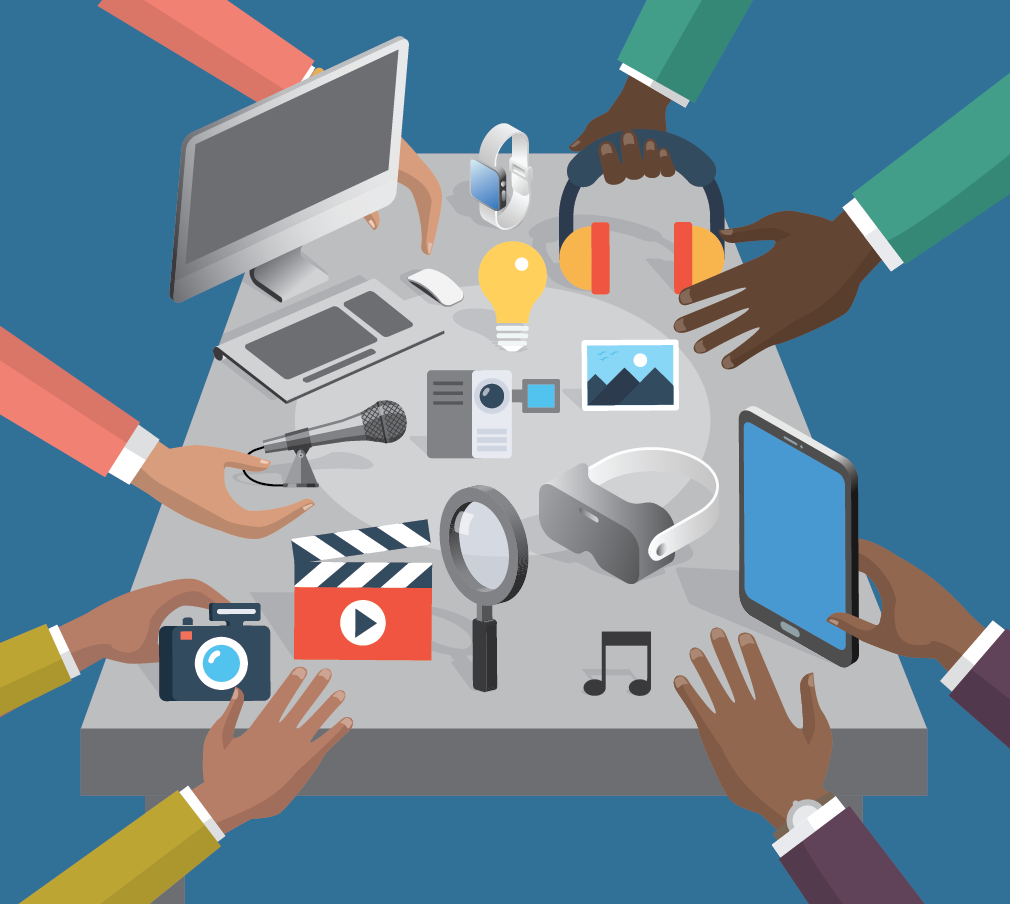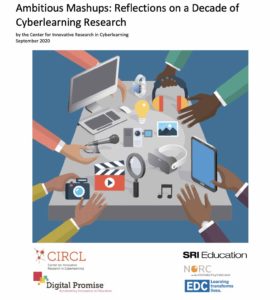Opportunities for students to learn are all around them. Our students are continuously learning at home and in their communities. As we continue to explore Ambitious Mashups, take a look at projects that have focused on how to provide valuable learning experiences and celebrate the knowledge students gain in out-of-school time. These projects have mainly focused on making, citizen science, and interactive/mobile exhibits. Keep reading to learn about a few ambitious mashups bringing highlighting learning in out-of-school time!
In the Learning in the Making: Leveraging Technologies for Impact project, researchers focused on promoting learning for middle and high school students using maker spaces. Their research found that successful making experiences for students happen at the intersection of the arts, engineering, and entrepreneurship, particularly when students have access to all three disciplines simultaneously. This ambitious project worked with 100-200 maker spaces to mash up informal learning and maker spaces in order to better understand how to support student learning in designing and making activities.
Paper Mechatronics is another making project, this time focusing on using inexpensive materials for students to learn a mashup of topics including programming, electronics, and mechanical design. This project uses making tools like computational devices, craft materials, and fabrication tools in a way that allows kids to build on their knowledge of paper crafts, be creative, and express themselves. See the ambitious projects you could take on at papermech.net.
A third out-of-school learning project, Mobile City Science, mashed up out-of-school learning with asset-based approaches to create a learning experience that celebrated students’ community knowledge while helping them to build technological skills. Students collected data about and mapped their communities using mobile technologies. They identified assets for learning (e.g., libraries), deficits to learning (e.g., no safe routes to school), and learning opportunities (e.g., places to build a community garden). These maps not only provide students with rich learning opportunities, but also can help educators to identify community-based and data-driven learning opportunities for students.
In previous blog posts we have focused on Culturally Sustaining Pedagogies and interviewed researchers focused on asset-based learning and ways to celebrate the assets that students bring to the classroom. Partnering with their communities and celebrating the knowledge that students bring from learning in these spaces is a great start to making your teaching more culturally responsive and sustaining.What does it look like to mash-up all of this up? Well, it is ambitious, but it is definitely doable!
While this making occurred outside of school, there are still many connections that can be made to your classroom. Not all students have opportunities to participate in out-of-school learning programs, particularly ones that are further from their homes or have a registration cost. Bringing these opportunities into the classroom expands the number of students who get to participate. Even if your students don’t have access to making using the same tools available in makerspaces, how could more simple projects like paper crafts or a physical (rather than technological) mapping project connect to students’ lives outside of school? Where do arts, engineering, and entrepreneurship intersect with your curriculum?
Learning from the CIRCL researchers who engaged in out-of-school time projects, think about:
- What learning is supported by making, citizen science, and interactive exhibit technologies? How can that learning be brought into the classroom through novel activities that all of our students can participate in?
- Are there maker-spaces near your school? How could you collaborate with them to provide new STEM learning experiences for your students?
- Citizen science represents a community of learners of all ages worldwide (and students can participate in many projects at no cost!). How could your students participate and collect science data inside and outside of school? How can what is learned through citizen science projects be capitalized on in your classroom? Check out Zooniverse for projects you can do in your classroom or find local projects on SciStarter or iNaturalist. Need some help getting started? iNaturalist has a teacher guide and a version of the app just for young students!
- Many students learn outside of school from their families and communities in addition to organized programs. How can you highlight the learning your students do outside of school, especially for students who are not typically the “focus” in the classroom.
- If you become aware of out-of-school opportunities, particularly ones that create low-cost or free opportunities for students, how can you share some out-of-school learning opportunities with all families?
How can you transform these opportunities within your classroom? Tweet us @EducatorCIRCLS and tell us about your innovative technology use and stay tuned for future blogs in this series about CIRCL Ambitious Mashups.
Educator CIRCLS posts are licensed under a Creative Commons Attribution 4.0 International License. If you use content from this site, please cite the post and consider adding: “Used under a Creative Commons Attribution 4.0 International License (http://creativecommons.org/licenses/by/4.0/).”
Suggested citation format: [Authors] ([Year]). [Title]. Educator CIRCLS Blog. Retrieved from [URL]


